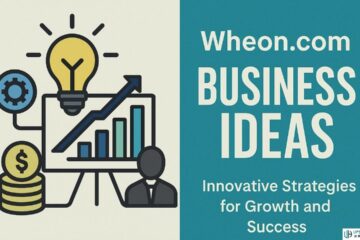Innovation Accounting in Business Development
Innovation in the form of transformative technologies, products, and business models is the lifeblood of economic growth. Economists estimate that innovation accounts for approximately 50% of U.S. GDP growth each year. However, there are growing concerns about stagnating productivity despite the rapid deployment of digital technologies.
Since 2005, U.S. labor productivity has grown at just 1.4% annually versus 2.2% historically, leaving nearly $10 trillion in untapped economic potential. To rekindle stronger productivity growth and seize this massive $10 trillion opportunity, companies must focus on effectively leveraging innovation by overcoming organizational challenges and biases that stifle productivity. Legacy accounting practices often fail to provide the tools needed to turn innovation investments into growth.
This is where the emerging practice of innovation accounting comes in. Unlike traditional accounting, it employs bespoke frameworks to evaluate innovative initiatives and intangible assets. By providing data-driven insights into innovation ROI, it enables businesses to right-size investments, enhance decision-making, and turbocharge growth.
What is Innovation Accounting in Business Development?

Innovation accounting is a new form of accounting designed to evaluate innovative initiatives and emerging growth opportunities. Rather than classifying all innovation investments as costs, it seeks to quantify the returns generated by these outlays.
This could include tracking how new product features expand customer lifetime value or how process improvements reduce support calls. By shedding light on the business impact of innovation, this accounting approach provides vital insights. These insights can be used to make growth-oriented decisions and allocate resources effectively.
It moves beyond traditional accounting’s limitations in handling uncertain futures and intangible assets. By adopting innovation accounting, companies can amplify the business impact of their innovative projects.
Innovation Accounting in Business Development: 7 Key Benefits

Here are 7 benefits of embracing innovation accounting to turbocharge business development:
1. Unlocking Exponential Company Growth
Productivity is the cornerstone of economic development. However, since 2005, U.S. productivity has grown at just 1.4% annually, leaving a massive $10 trillion opportunity untapped. Innovation accounting helps channel investments into the most promising areas that demonstrate traction and have the highest potential, strengthening the overall innovation ecosystem.
Innovation in accounting provides tools to thoroughly assess prospective investments using customized frameworks versus gut feeling. Key innovation metrics are tracked to forecast returns and model different growth scenarios.
This enables data-driven decision-making to double down on the initiatives with the highest ROI potential while pulling back on lower-impact ones. With the ability to allocate resources to innovations that move the needle based on projected returns, companies can unlock exponential growth trajectories over the long term.
2. Developing an Insight-Driven Strategic Framework
Innovation accounting utilizes a rigorous results framework with clear indicators tied back to long-term business objectives. This framework provides a comprehensive view of performance. It encompasses vital intangibles like brand equity, partnership strength, and talent retention.
With real-time tracking of metrics ranging from customer acquisition cost to product adoption rates, the framework essentially becomes a navigation system guiding resource allocation. Rather than annual or quarterly analysis, companies can course-correct much quicker based on emerging data signals.
For instance, if a new feature is seeing an adoption rate of only 2% per week, innovation accounting can immediately highlight this low traction to change product strategy, whereas traditional accounting may take months to surface the issue through lagging income statement reports. This agility is a key benefit over traditional accounting.
3. Right-Sizing Innovation Investments
Traditional accounting often classifies all innovation spending as “costs” or “losses”, obscuring the returns generated by the investment. Innovation accounting provides granular visibility into returns on innovation by quantifying indicators such as new customers acquired from an enhanced product feature.
This ensures adequate innovation investment without overspending. For instance, by tracking the incremental revenue generated from a new personalized promotion engine, a company can optimize the budget allocated to further develop this capability. Companies can double down on emerging initiatives demonstrating tangible returns and pull back resources from innovations showing low impact. This prevents “innovation theater” where flashy projects absorb budgets without further goals.
4. Focused Innovation Strategy
One of the major benefits of innovation accounting is bringing better focus and alignment to a company’s innovation investments and activities. Providing clear data and rigor prevents innovation efforts from becoming scattered and disconnected from business goals.
Specifically, a strong innovation accounting practice drives a focused innovation strategy in several ways:
- Strategic filtering of ideas – Innovation accounting requires that new ideas and initiatives be evaluated not just on novelty but on their potential business impact. This results in more ideas aligned with strategic goals rising to the top.
- Data-driven initiative prioritization – With good innovation data, initiatives can be compared and objectively prioritized based on factors like commercial viability, time-to-market, risks, and resources required. This enables focus on the highest potential opportunities.
- Balanced innovation portfolio – The portfolio view provided by innovation accounting helps maintain diversity in the types of innovation pursued. Companies can balance short-term and long-term innovations across various horizons.
- Course correction objectivity – Metrics make it easier to shelve or pivot lagging innovation projects, even if they have internal sponsors. Failure is acceptable if the data doesn’t support continued investment.
- Resource optimization – Better visibility into resource allocation and needs across the innovation portfolio allows for optimization and avoids spreading teams too thin.
- Strategic iteration – As the external environment changes, data makes it easier to iterate on innovation strategy and re-orient activities towards new goals and priorities.
By enabling this focus and linkage to strategic business objectives, innovation accounting maximizes the return and impact of innovation investments. It’s a key advantage over innovating without a tight strategic framework.
5. Enhanced Innovation Portfolio Management
Juggling multiple innovative initiatives across different departments with traditional accounting is nearly impossible given the lack of comparability. Marketing success metrics vary vastly from R&D benchmarks. Innovation accounting applies custom indicators tailored to each initiative’s specific goals and metrics.
This enables managing a diverse innovation portfolio holistically. Given a unified framework, trade-off decisions can be made objectively regarding resource allocation across different projects. Rather than struggling to balance disparate initiatives, innovation accounting provides the tools to evaluate and manage a thriving innovation portfolio.
6. Higher ROI from Growth Initiatives
Amazon Prime and Netflix exemplify how companies invest heavily in growth assets or “engines” expected to pay dividends over time. However, traditional accounting often fails to accurately capture returns on these long-term growth initiatives.
Innovation accounting aims to quantify previously obscured returns from growth initiatives. With clearer visibility into the revenue and profit contribution from assets like proprietary technology or exclusive content, companies can optimize resources allocated to the drivers of growth and margin expansion.
7. Integrating Innovation Accounting at Your Company
Transitioning to an innovative accounting framework represents a shift in culture, processes, and systems. Here are some tips for effectively integrating innovation accounting:
- Secure executive buy-in – Educate leadership on the value and get buy-in to use innovation metrics in decision-making.
- Phase it in gradually – Start with a pilot on a few innovation initiatives to demonstrate value before scaling.
- Implement dedicated data infrastructure – Put in place systems to efficiently collect, analyze, and visualize innovation data.
- Train cross-functional teams – Train employees across functions on applying the new metrics and tools.
- Communicate consistently – Share innovation accounting results, progress, and lessons learned across the organization.
- Refine over time – Expect missteps at first and continuously refine the framework as the experience grows.
Conclusion
To thrive in today’s disruptive environment, companies must master innovation. Innovation accounting provides a data-driven approach to strategically guiding and evaluating these innovation efforts. By adopting an innovation accounting, companies can amplify the business impact of their innovative projects.
The time for more disciplined measurement and management of innovation investments is now. Is your company ready to embrace innovation accounting and reap the rewards?
Frequently Asked Questions

1. What are some examples of innovation accounting metrics?
Some common innovation metrics include prototype cost/speed, early user feedback scores, product demo views, beta sign-ups, NPS, embedded sensor data, A/B test results, funnel conversion rates, and more.
2. How is innovation accounting different from traditional accounting?
Traditional accounting is retrospective, focuses on revenues/costs, and relies on periodic reporting. Innovation accounting is forward-looking, focused on progress metrics, and provides real-time data.
3. What innovation initiatives can benefit from this approach?
Innovation accounting can be applied across initiatives – new products, business models, markets, branding, technologies, and processes. It’s applicable to both product and service innovations.
4. Who in an organization drives the adoption of innovation accounting?
Champions are often found in finance, strategy, technology, and product teams. However, support is needed across other functions and from executives for effective adoption.
See Also: NERC-CIP Audits Prep: Documentation & Compliance Tips










